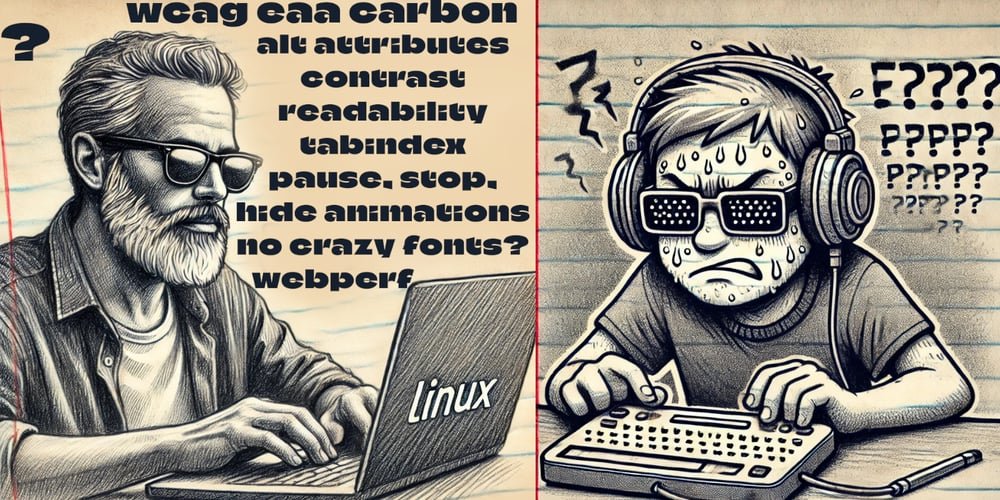To wrap up our series on making our work and products more sustainable and breaking our conventions at least a little bit, here’s a My recent articles on Hashnode Image collage generated using artificial intelligence.
Sustainable web design and development
While some people wonder what web development is and whether it is different from web design, web developers have always tried and worked hard to define and create their specific expertise and experience: Front-end web development, full-end web development, e-commerce, UX Engineering or Creative Web Development – I’m also known as a technical consultant, software developer or web designer, an advocate for sustainable web development, emotion-driven development, and devUX collaboration. But what about accessibility?
Underrated aspects and overlooked synergies
Accessibility, usability, page speed, and eco-efficiency (or “sustainable web development”) are all underrated, but extremely important for creating future-proof websites.
In the United States, companies are obliged to make their online stores and websites more inclusive and accessible (either by law or by their sales departments), but many German and other European merchants and service providers have yet to catch up, despite the E.U. Although they cannot ensure that everyone can use their product, they will still lose potential customers.
This underrated aspect of impactful web development has the potential to open up to new clients and become more efficient, saving costs instead of wasting effort and money! Many existing websites have optimization opportunities, such as improving images and web videos, increasing color contrast and readability, or focusing more on key parts of the content.
Ignorance, pragmatism and continuous learning
As a web developer, I have the technical tools to measure and improve existing websites. As an experienced Web developer, I also have an intuition that helps me quickly achieve our goals when looking at an existing website or planning a new Web project that hasn’t even started yet.
But as a capable and privileged person, I have a hard time imagining what it’s like to be dependent on assistive technology, and perhaps some users will be frustrated trying to use something I built with the best of intentions. Still, I continued to push, prioritize topics, learn, and get feedback.
contact me
If you have feedback, if you are looking for a partner, or if you would like to learn more about what I can do for you and your business, please contact me through my website: ingo-steinke.com!
Acknowledgments
The poster image was created using artificial intelligence (DALL·E 3, from ChatGPT) to illustrate the two aspects of working sustainably and beyond my bubble while risking failure and frustrating real users. The person on the left side of the image, an old man with a gray beard, wearing sunglasses and a shirt, is typing something into a laptop, while the person on the right side is wearing headphones and glasses, using a Braille reader, trying to read the text Sweat sometimes.
The crazy font used for the subtitles is Climate Crisis/Climate Fontsdesigned by Daniel Coull and Eino Korkala, “a free font for visualizing the urgency of the climate crisis.”
further reading
Blog posts tagged “sustainability” on Open-Mind-Culture.org:
